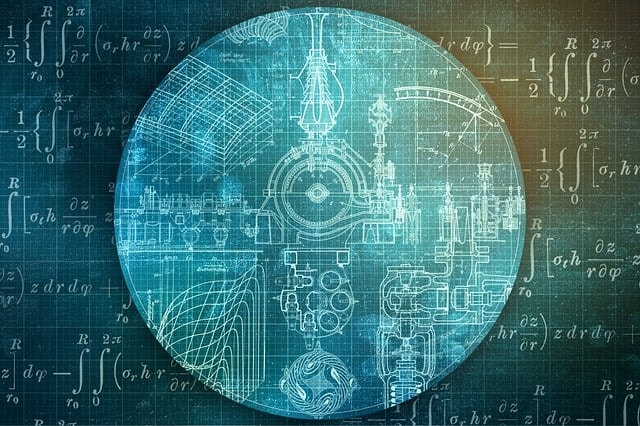Are you interested in using AI technology, and want to know more about its inner workings? There are a number of key things to understand if you’re wondering, “How does AI work?” We’ll share the most common AI technologies in this article so you can understand why these tools have such impressive results.
You don’t have to be tech-savvy to understand the technologies at play in this post. That’s because our aim is to provide an easy-to-digest breakdown of how computer systems make use of artificial intelligence.
Keep reading for a complete overview of how AI systems work by taking advantage of neural networks.
Sep 18, 2024 • 12 min read
What Is AI?
Artificial Intelligence (AI) is a branch of computer science focused on creating systems capable of performing tasks that typically require human intelligence. You may have seen tools like ChatGPT or Tesla’s self-driving software in the media.
These tasks include learning, reasoning, problem-solving, understanding natural language, recognizing patterns, and making decisions. Furthermore, AI technologies range from simple rule-based systems to advanced machine learning models. They typically learn from data to improve over time.
How Does Generative AI Work: Top 5 Features Of AI
Now that we’ve covered the question “What is AI?” let’s take a closer look at how does generative AI work. You’ll see that there are a lot of moving parts under the hood, which result in high-quality outcomes.
The majority of natural language processing systems share these features, so you can better understand how they function. Below, we outline some of the best features of AI.
1. Machine Learning
Machine Learning (ML) is a core AI feature that enables systems to learn from data and improve their performance over time. This process is very similar to how the human brain works. It involves algorithms that identify patterns, make predictions, and adapt to new information.
Furthermore, ML is widely used in applications like recommendation systems, fraud detection, and personalized marketing. The ability of ML models to analyze vast amounts of data and deliver accurate insights makes it a powerful tool across industries. This includes anything from learning how to start an essay to marketing automation to self-driving cars.
2. Natural language Processing
Natural Language Processing (NLP) is a key AI feature that allows machines to understand, interpret, and respond to human language. Additionally, NLP powers applications like chatbots, virtual assistants, and language translation services.
The technology requires a lot of data to train on and constantly gets better to improve the relevancy and accuracy of outputs. Furthermore, it can execute various tasks, such as sentiment analysis, text summarization, and speech recognition.
Additionally, NLP combines computational linguistics with machine learning to process unstructured text data. This enables machines to understand context, tone, and intent. This capability enhances human-computer interaction, thereby making technology more accessible and user-friendly.
3. Computer Vision
Computer vision is an AI feature that enables machines to interpret and make decisions based on visual input. This includes images and videos. You can analyze visual data to recognize objects, detect patterns, and even identify specific features like faces or gestures.
This type of AI and machine learning technology is widely used in autonomous vehicles, facial recognition, medical imaging, and quality inspection in manufacturing. Furthermore, Computer vision combines deep learning with image processing to achieve high accuracy in identifying and classifying visual content.
4. Predictive Analytics
Predictive analytics is an AI feature that uses historical data, statistical algorithms, and machine learning to forecast future outcomes. These AI tools can generate accurate outcomes in a wide range of use cases, including finance, healthcare, and marketing.
Furthermore, by analyzing patterns in past data, predictive analytics can identify risks, opportunities, and potential future events with a high degree of accuracy. Hence, it allows businesses to proactively address challenges and improve customer experiences.
Furthermore, as AI models become more sophisticated, predictive analytics is increasingly crucial for data-driven decision-making and competitive advantages.
5. Generative AI
Generative AI is an advanced AI feature that creates new content, such as text, images, music, or even code. The outputs are based on the data they have been trained on. Furthermore, technologies like GPT (Generative Pre-trained Transformer) models and GANs (Generative Adversarial Networks) are examples of generative AI.
These models can produce realistic and creative outputs, which makes them valuable for content creation.
How Does AI Detection Work?
Knowing how AI detection works can be useful in a range of scenarios, such as when you’re worried if your professors can detect ChatGPT. Here are the top factors that are implemented within AI detection tools:
- Pattern recognition: AI detection works by recognizing patterns in data that indicate the presence of AI-generated content. It analyzes text, images, or other media for specific markers. Top examples include language structures, repetition, or unnatural phrasing. This pattern recognition helps differentiate between human-created and AI-generated content.
- Cross-referencing with databases: AI detection systems often cross-reference content against databases of known AI-generated outputs. In fact, you can compare the text or media with existing AI-generated examples. For example, the system can identify duplicates or near-matches. This method helps detect recycled or rephrased content produced by AI, which may otherwise appear unique but is actually similar to existing AI generation.
- Machine learning models: Machine learning models trained on large datasets of human and AI-generated content are key to AI detection. These models learn to identify subtle differences in style, structure, and word choice. When new content is analyzed, the model compares it to known examples to determine the likelihood of AI involvement.
- Metadata examination: Some AI detection tools analyze metadata, such as timestamps, formatting, or source code. Furthermore, metadata can reveal inconsistencies. For instance, it might be unusual creation times or file properties typical of AI tools.
- Statistical analysis: Statistical analysis is used to detect AI-generated content by examining word frequency, sentence length, and stylistic patterns. Also, AI content often exhibits consistent statistical markers, such as repetitive sentence structures or unusual word combinations. This typically differs from natural human writing.
How Does AI Art Work?
If you are an artist or graphic designer, you must have wondered, “How does AI art work?” There are some important nuances to how AI systems can generate art. At this point, the technology is highly impressive. There are a few key features and factors at play, which we’ll discuss in the following sections.
Neural Networks
AI art is primarily created using artificial neural networks, which is a type of machine learning model that mimics the human brain’s structure. These networks consist of layers of interconnected nodes that process data, learning patterns, and features from large datasets of images.
Additionally, neural networks can generate new images by understanding complex concepts. Some of these include color, texture, and style. For instance, Generative Adversarial Networks (GANs) are often used in AI art, where one network generates images and another evaluates them. The end result is highly realistic or stylistically unique art creations that mirror human-made pieces.
Style Transfer
Style transfer is a popular technique in AI art where the style of one image is applied to the content of another. For example, an AI can take the style of a famous painting and apply it to a photograph, thereby creating a new image that blends the two.
This process involves deep learning algorithms that separate and recombine the content and style of different images. Therefore, AI can create artworks that merge the visual elements of various sources, and that results in innovative and unique artistic expressions.
Training With Large Datasets
AI art relies on training with extensive datasets of images, which are often sourced from various artistic styles, genres, and mediums. These datasets help the AI model learn the characteristics of different art forms. This means they can generate new images that reflect these styles.
The more diverse the dataset, the more versatile the AI’s output can be. Also, the AI learns to recognize elements like:
- Brushstrokes
- Composition
- Shading
These ideas allow it to create art that ranges from abstract to photorealistic. This extensive training data process is crucial for the AI to produce high-quality and varied artistic works.
Generative Adversarial Networks
GANs are a crucial technology behind AI art. They consist of two neural networks, which are a generator and a discriminator. The generator creates images, while the discriminator evaluates them against real images to provide feedback. Through this process, the generator improves its output over time to create increasingly realistic or artistically complex images.
Furthermore, GANs enable AI to generate entirely new artworks that are indistinguishable from human-made creations. In effect, you’ll push the boundaries of digital art with this AI technology. You can create everything from realistic portraits to abstract compositions.
User Input and Customization
Many AI art tools allow user input and customization so individuals can guide the creation process. For example, users can select specific styles, colors, or themes, and the AI adjusts its output accordingly.
This interaction between human creativity and AI’s generative capabilities results in a personalized experience. However, you’ll need to understand the best practices by creating impressive prompts. Here are some suggestions for writing prompts to create art with examples:
- Be specific with details: Include precise visual elements like colors, textures, and lighting. Also, mention the environment, objects, or characters explicitly. For instance, “A futuristic city at sunset, with towering skyscrapers, neon lights, and flying vehicles.”
- Describe a mood or atmosphere: Convey the feeling or emotion you want the image to evoke. This means you’ll need to specify the mood through adjectives and scene settings. For example, “A misty, mysterious forest at dawn, with soft, ethereal light filtering through towering trees.”
- Use artistic styles and references: Mention specific artistic styles, eras, or techniques to provide further direction. For instance, “A surreal landscape in the style of Salvador Dalí, featuring melting clocks draped over barren trees.”
- Integrate motion and action: Describe any action or dynamic elements to bring the image to life. For example, “A dynamic scene of a waterfall cascading over jagged rocks, with water splashing into a misty pool below.”
- Include a clear focal point: Specify the main subject of the image and what should draw attention. For example, “A powerful lion standing majestically on a rocky outcrop that’s overlooking a vast savannah.”

Why You Must Choose the Right AI Tool
Choosing the right AI tool depends on several factors to ensure they are aligned with your specific needs and goals. Start by identifying the problem you want to solve. That’s because the AI tools vary in specialization. For example, some excel in writing essays fast while others solve math problems.
Next, assess the technical expertise required. Some tools have a user-friendly interface and require minimal coding, while others need advanced knowledge in AI and data science. Furthermore, consider the scalability and flexibility of the tool. This ensures it can handle the volume of data you have now and in the future.
Furthermore, evaluate the tool’s performance through benchmarks or case studies. This will help you understand how well it meets your accuracy and efficiency requirements. Additionally, check for community support, documentation, and available training resources.
Finally, consider cost and licensing models, including hidden costs like computing resources and ongoing maintenance. However, open-source tools may offer more flexibility but often require additional customization.
Another great example of AI being applied to real-world problem-solving is in the field of mathematics. For instance, an AI geometry solver can help students and professionals tackle complex geometry problems with step-by-step visual explanations. This kind of AI tool doesn’t just offer answers — it breaks down how to approach each problem, which boosts understanding and saves a ton of time. If you’re someone who struggles with math or just wants quicker, clearer solutions, tools like this are a game-changer. They also highlight just how versatile AI can be when tailored to specific subject areas.
Best Practices When Using AI
There are several best practices to follow to ensure you get the most out of your AI tools. These tips can help beginners to hit the ground running while using AI for personal or professional use. Here are the top AI best practices to consider:
- Ensure data quality: AI relies heavily on data, so the quality of your data is critical. Ensure that it’s accurate, relevant, and representative. Furthermore, you’ll need to clean and preprocess data to remove errors, biases, and inconsistencies.
- Consider ethical implications: AI deployment should always consider ethical implications, such as fairness, privacy, and the potential for bias. Therefore, implementing ethical guidelines and regularly auditing AI systems for unintended consequences is the best approach.
- Continuously monitor and improve: AI systems require ongoing monitoring to maintain performance and relevance. Therefore, evaluate AI outputs, update models with new data, and adjust them as necessary to address evolving business needs. Furthermore, regular maintenance ensures AI systems remain accurate, efficient, and aligned with goals.
- Write creative prompts: AI can be a valuable tool for generating creative writing prompts, such as providing inspiration for writers facing writer’s block. However, you need to practice creating the right prompts for your desired outcome.

Looking for the Best AI Tool? Give Smodin AI a Try
AI has a large number of uses across many industries. As the technology becomes more advanced, you can expect even more industries to find a use case. Understanding how the technology works at a basic level will help you understand its limitations and strengths.
It’s a good idea to keep tabs on the latest technologies to better understand how does AI work with the latest updates. Therefore, you can quickly take advantage of new features to improve the quality of your AI outputs.
Do you want to use an AI service that constantly releases new features and updates? Then give Smodin AI a try for the complete package. We constantly update our features to provide the best service in the industry. Choose Smodin AI today and get help with essay writing, mathematical problems, and a lot more!

FAQs
What is machine learning?
Machine learning is a core aspect of AI where systems automatically learn and improve from experience without explicit programming. It involves feeding data into algorithms, which then find patterns and make predictions or decisions based on the data.
What is deep learning?
Deep learning is a subset of machine learning that uses complex neural networks with many layers. These AI technologies can handle vast amounts of data and perform complex tasks such as speech recognition, language translation, and image analysis.
Furthermore, deep learning models learn from large datasets by recognizing intricate patterns, thereby leading to highly accurate outcomes.
How does AI learn from data?
AI learns from data through algorithms that identify patterns and relationships within that data. In supervised learning, labeled data trains the AI to make predictions. In unsupervised learning, AI discovers patterns in unlabeled data.
Additionally, reinforcement learning involves trial and error, where the AI receives feedback on its actions and adjusts accordingly. The more data AI processes, the better it can learn and adapt.
What are the common applications of AI?
AI is widely used across various sectors. In healthcare, it aids in diagnostics and personalized medicine. In finance, AI powers fraud detection and algorithmic trading. Additionally, it enhances customer service through chatbots.
AI also contributes to language translation, content creation, and even complex problem-solving in scientific research. Tools like Smodin AI offer AI writing services that help a wide range of users get work done faster and at higher accuracy levels.
What is the future of AI?
The future of AI promises advancements in autonomous systems, personalized medicine, smart cities, and beyond. As AI continues to evolve, it’s expected to integrate deeper into everyday life. It won’t be a surprise if it ends up solving complex problems and drives innovation.
However, this progress must be balanced with ethical considerations and responsible development to ensure that AI benefits all of humanity.







 AI
Plagiarism Checker
AI
Plagiarism Checker
 AI
Content Detection Remover
AI
Content Detection Remover
